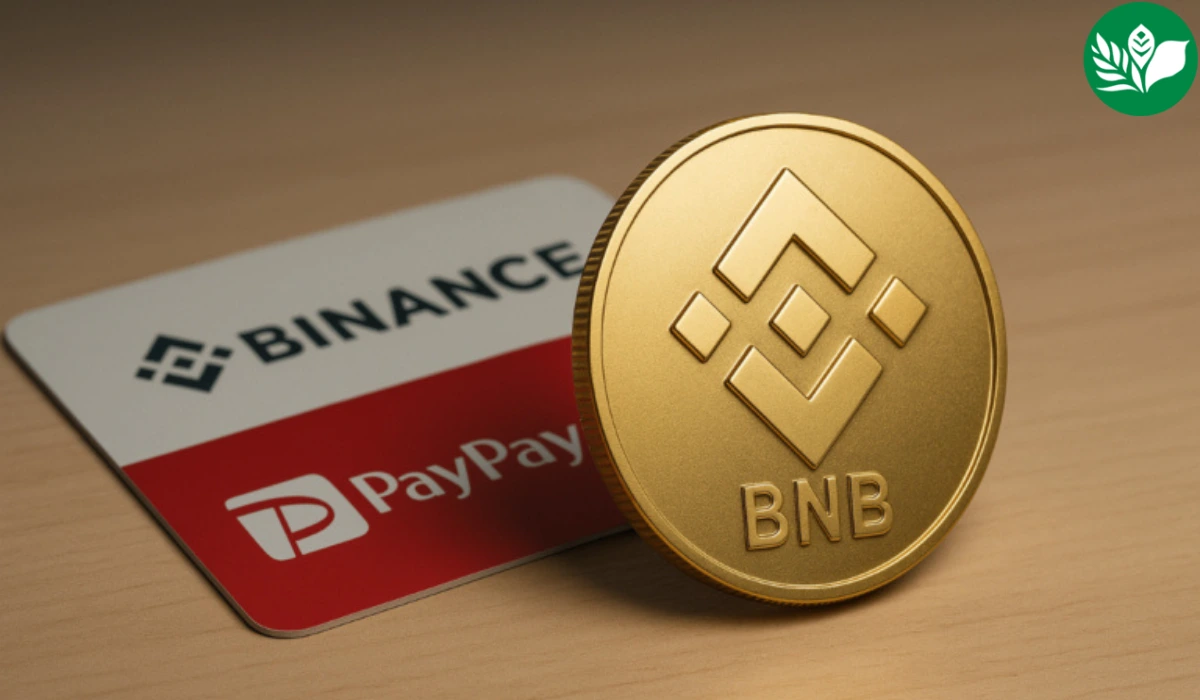BNB's Latest Momentum
Binance Coin (BNB) continues to demonstrate resilience in a volatile cryptocurrency market. On October 9, 2025, BNB tested the $1,300 mark for the fifth consecutive attempt within two days, reflecting sustained buying pressure. Currently trading at approximately $1,282, the token sits only 2.5% shy of its recent peak at $1,314, achieved earlier this week.
This upward trajectory aligns with broader market recovery signals. After a brief dip to $1,260, BNB rebounded sharply, buoyed by positive ecosystem developments. The token's performance underscores its role as a key altcoin, with a market capitalization exceeding $183 billion, positioning it as the third-largest cryptocurrency behind Bitcoin and Ethereum.
Investor confidence has surged, driven by strategic expansions within the Binance network. Such movements not only highlight BNB's utility but also its sensitivity to platform-specific news, making it a focal point for traders monitoring altcoin trends.
Binance Japan and PayPay Forge Transformative Alliance
The catalyst for BNB's recent push stems from a landmark partnership between Binance Japan and PayPay Corporation. Announced on October 8, 2025, the deal sees PayPay, a SoftBank Group subsidiary, acquiring a 40% equity stake in Binance Japan. This capital and business alliance merges PayPay's dominant cashless payment infrastructure with Binance's blockchain prowess.
PayPay, boasting over 70 million active users in Japan, operates as the country's leading digital wallet app. The integration targets seamless connectivity between fiat payments and digital assets, addressing a key barrier to mainstream crypto adoption. Initial rollouts include enabling Binance Japan users to purchase cryptocurrencies directly using PayPay Money balances within the app.
Furthermore, users can withdraw proceeds from crypto sales straight to their PayPay accounts, eliminating traditional banking intermediaries. This frictionless experience aligns with Japan's government-mandated goal of 40% cashless payment penetration by the end of 2025, positioning the partnership as a compliance-driven innovation.
Softbank & PayPay invests 40% in Binance Japanhttps://t.co/To6pnzeTfm
— CZ 🔶 BNB (@cz_binance) October 9, 2025
Background on PayPay's Role in Japan's Fintech Landscape
PayPay's evolution traces back to its 2018 launch as a joint venture between SoftBank and Yahoo Japan. Rapid user growth propelled it to process billions in transactions annually, capturing nearly half of Japan's QR code payment market. Backed by SoftBank's vast resources, PayPay has invested heavily in secure, user-centric financial tools.
The decision to enter the crypto space reflects broader diversification efforts. PayPay executives, including Corporate Officer Masayoshi Yanase, emphasize synergies with group companies in finance and payments. Yanase noted that the alliance will "provide Binance users with solutions combining PayPay's convenience and security."
This move follows PayPay's exploration of stablecoin investments and U.S. stock listings, signaling a strategic pivot toward Web3. By leveraging its scale, PayPay aims to democratize digital asset access, particularly for retail users wary of standalone crypto platforms.
Binance Japan's Compliance and Growth Strategy
Binance Japan, established in 2020, has navigated Japan's stringent regulatory environment under the Financial Services Agency (FSA). Compliance with the Payment Services Act and anti-money laundering protocols has been central to its operations, earning it a reputation as a trusted local player.
The PayPay stake acquisition bolsters Binance Japan's foothold in Asia's most regulated crypto markets. Takeshi Chino, Binance Japan's general manager, described the partnership as a "significant step toward making Web3 more accessible." It enhances liquidity and user onboarding, critical for scaling in a jurisdiction prioritizing consumer protection.
Historically, Binance global has pursued localized partnerships to mitigate regulatory risks. This Japan-focused initiative mirrors successes in Europe and the Middle East, where alliances with traditional finance entities have driven user growth. For BNB holders, such developments reinforce the token's ecosystem value, as increased platform activity correlates with higher demand.
Technical Analysis: BNB's Bullish Indicators and Resistance Tests
BNB's price action reveals a pattern of persistent upward probing. The daily chart displays widening Bollinger Bands, with the token hugging the upper band—a classic sign of strong momentum but potential short-term overextension. This configuration often precedes volatility spikes, advising caution for leveraged positions.
The Relative Strength Index (RSI) currently hovers above 70, entering overbought territory. Such readings suggest a possible pullback to the $1,250 support level, where historical buying interest has materialized. A decisive break below this could cascade toward the $1,100–$1,150 consolidation zone, offering entry points for long-term holders.
Conversely, the Moving Average Convergence Divergence (MACD) maintains a bullish crossover, with expanding histogram bars signaling robust buying pressure. Volume metrics support this, showing a 20% uptick in 24-hour trades reaching $7.55 billion. If $1,300 converts to support, analysts project a retest of $1,350, followed by a potential rally to $1,500.
Key Support and Resistance Levels for Traders
Understanding pivotal price levels aids in risk management. The $1,300 resistance, tested five times in 48 hours, represents psychological and technical significance. A sustained close above it could invalidate bearish divergence on shorter timeframes.
Lower supports at $1,250 and $1,100 align with 50-day and 200-day exponential moving averages, respectively. These zones have historically absorbed selling pressure, as seen during September's consolidation. On the upside, $1,350 emerges as the next Fibonacci extension target, derived from the October low-to-high swing.
Traders should monitor on-chain data, such as active addresses and transaction volumes on BNB Chain, for confirmation. Elevated metrics post-partnership announcement indicate genuine organic interest, bolstering breakout probabilities.
BNB's October Surge: 30% Gains and $43 Billion Market Cap Boost
October 2025 has been transformative for BNB, with a 30% appreciation since the month's start. This rally has injected nearly $43 billion into its market capitalization, outpacing many blue-chip altcoins. The surge coincides with renewed altcoin seasonality, where capital rotation from Bitcoin favors utility-driven tokens like BNB.
Contributing factors include macroeconomic tailwinds, such as anticipated U.S. Federal Reserve rate adjustments, which historically favor risk assets. BNB's correlation with broader indices remains at 0.75, implying shared upside potential in a risk-on environment.
Ecosystem expansions, including the recent $1 billion YZi Labs builder fund, further fuel optimism. This initiative targets developers on BNB Chain, aiming to spur decentralized application (dApp) innovation. Early allocations focus on DeFi, NFTs, and gaming, sectors where BNB's low fees provide a competitive edge.
Social Media Buzz and Community Sentiment
Social platforms amplify BNB's momentum. A recent X post by Binance Chief Customer Officer Yi He teased "new products coming soon," sparking widespread speculation. The official Binance Wallet account followed with "Is everyone ready?", amassing thousands of engagements and driving retail inflows.
Sentiment analysis tools report a 85% bullish reading across crypto forums, with mentions of "BNB PayPay partnership" surging 400% in 24 hours. This narrative dominance enhances visibility, attracting institutional scouts monitoring social volume as a leading indicator.
Community-driven events, such as BNB Chain hackathons, also contribute. With over 5 million daily active users on the chain, these activities underscore BNB's maturing infrastructure, differentiating it from speculative narratives in the altcoin space.
Implications for Japan's Crypto Ecosystem
This partnership arrives at a pivotal juncture for Japan's digital asset sector. As the world's third-largest economy, Japan enforces rigorous standards under the Financial Instruments and Exchange Act, fostering a stable yet innovation-friendly environment. The PayPay-Binance tie-up could catalyze similar fintech-crypto fusions, accelerating adoption rates currently at 15% nationally.
Regulatory alignment is key. Both entities' emphasis on know-your-customer (KYC) and anti-money laundering compliance mitigates risks, potentially easing FSA approvals for expanded services. Analysts forecast a 25% uptick in Japanese crypto trading volumes by Q1 2026, attributable to such integrations.
Broader economic context includes Japan's aging population and push for financial inclusion. By embedding crypto within familiar apps like PayPay, the alliance lowers entry barriers, empowering underserved demographics. This aligns with national strategies for a cashless society, where digital assets play a complementary role.
Challenges and Regulatory Considerations
Despite optimism, hurdles persist. Japan's conservative stance on crypto taxation—treating gains as miscellaneous income up to 55%—may deter casual users. The partnership must navigate evolving guidelines, particularly around stablecoin issuance and cross-border flows.
Data privacy remains paramount. PayPay's encrypted infrastructure, combined with Binance's blockchain transparency, offers robust safeguards. However, any lapses could invite scrutiny, as seen in past global incidents. Proactive audits and user education will be essential for sustained trust.
Experts like those at FinanceFeeds predict the deal could inspire regional precedents, with Southeast Asian fintechs eyeing similar models. For BNB, this translates to enhanced global liquidity, as Japanese yen pairings strengthen on exchanges.
Broader Market Sentiment and Altcoin Outlook
BNB's performance foreshadows altcoin resurgence. With Bitcoin stabilizing above $90,000, capital inflows target high-utility tokens, evidenced by a 15% Ethereum rally in tandem. BNB's outperformance—up 5% against ETH in the last week—highlights its exchange-backed stability.
Market sentiment indices, such as the Crypto Fear & Greed Index at 75 (greed), reinforce this. Institutional adoption, via vehicles like BlackRock's crypto ETFs, indirectly benefits BNB through ecosystem spillovers. Analysts at CoinCodex project BNB averaging $1,294 by December 2025, with upside to $1,500 if momentum holds.
Geopolitical factors, including U.S.-Japan trade dynamics, add layers. Stable yen policies support fiat-crypto gateways, while SoftBank's involvement signals venture capital confidence. As altcoins gear for a broader rally, BNB's positioning—tied to the world's largest exchange—positions it for outsized gains.
Potential Pullback Risks and Mitigation
Overheating signals warrant vigilance. An RSI above 78 indicates exhaustion, potentially triggering a 10-15% correction. External shocks, like renewed U.S. regulatory probes, could amplify downside.
Mitigation lies in diversified holdings and stop-loss strategies. Long-term, BNB's deflationary mechanics—via quarterly burns reducing supply to 100 million—provide a floor. Recent burns have eliminated over 40% of initial issuance, enhancing scarcity amid rising demand.
Future Projections for BNB in 2025 and Beyond
Looking ahead, BNB's trajectory hinges on ecosystem delivery. Short-term targets cluster around $1,350–$1,500 by year-end, per models from Changelly and DigitalCoinPrice. These forecasts incorporate partnership-driven volume growth and chain upgrades.
By 2026, projections range from $2,000 to $2,800, assuming sustained DeFi expansion on BNB Chain. Long-term, 2030 estimates reach $4,000, fueled by global Web3 penetration. Key drivers include interoperability enhancements and layer-2 scaling solutions.
Risks include competitive pressures from Solana and Polygon, which boast faster transaction speeds. However, Binance's liquidity moat—handling 55% of global crypto volume—mitigates this. For investors, BNB represents a balanced bet on utility and adoption.
Strategic Advice for BNB Stakeholders
Stakeholders should prioritize on-chain metrics over hype. Monitor developer activity via GitHub commits and dApp TVL, which recently surpassed $5 billion. Dollar-cost averaging mitigates volatility, while staking yields—averaging 4-6% APY—offer passive income.
In Japan, the PayPay integration simplifies exposure, ideal for beginners. Globally, Binance's API expansions enable automated trading, appealing to institutions. As BNB evolves, its alignment with real-world finance cements its status as a cornerstone asset.
Conclusion
BNB's reclamation of $1,300 amid the Binance Japan-PayPay partnership exemplifies the token's intertwined fate with platform innovations. This alliance not only boosts immediate price momentum but also lays groundwork for Japan's crypto mainstreaming. With technicals favoring bulls and fundamentals strengthening, BNB stands poised for further appreciation.
Market participants should remain attuned to overbought signals while capitalizing on ecosystem tailwinds. As digital finance converges, BNB's role in bridging worlds positions it as a resilient choice in portfolios.
Disclaimer: This article provides unbiased and transparent reporting based on available data. It delivers accurate and timely information but does not constitute financial or investment advice. Cryptocurrency markets fluctuate rapidly; verify details independently and consult professionals before decisions.



